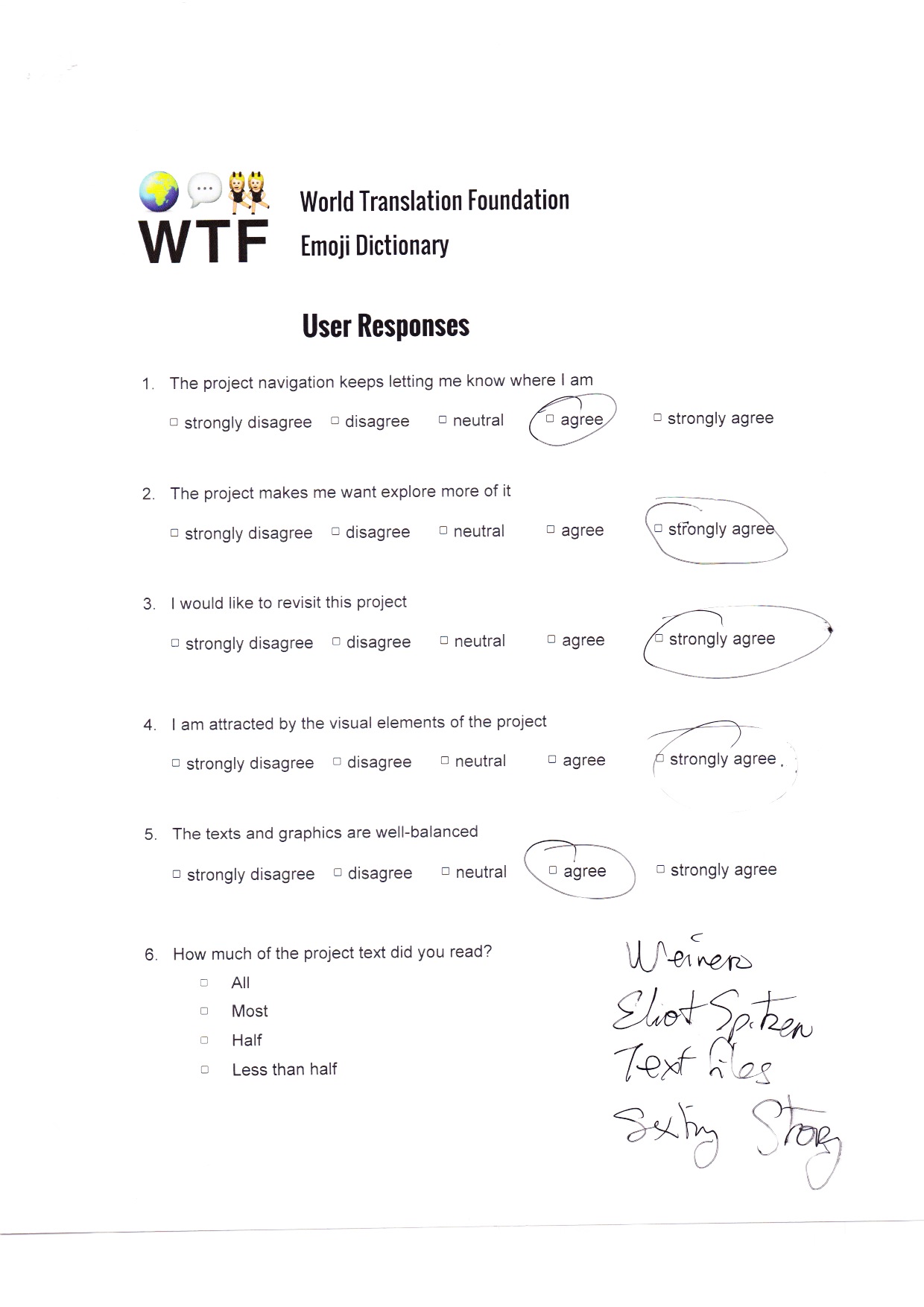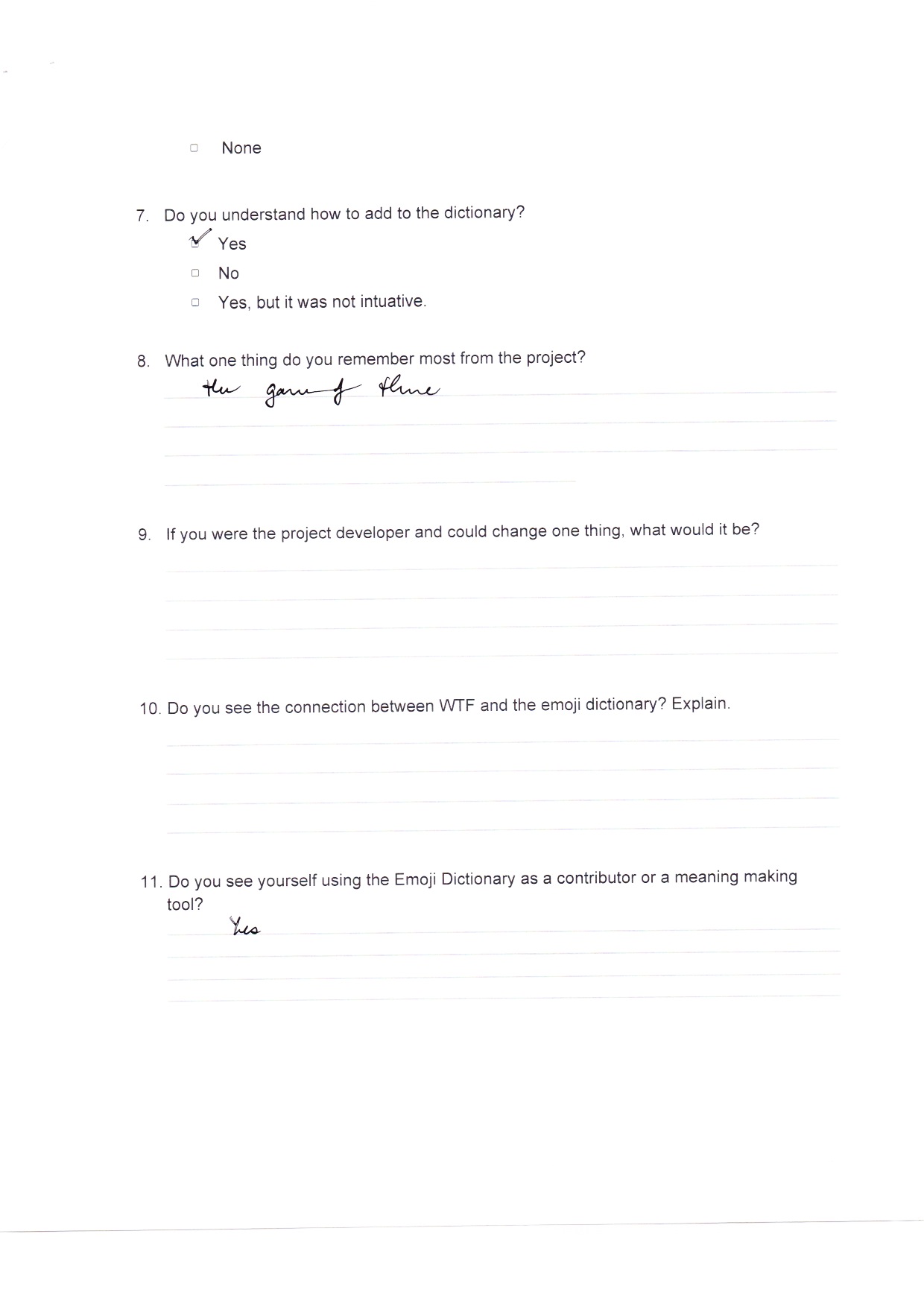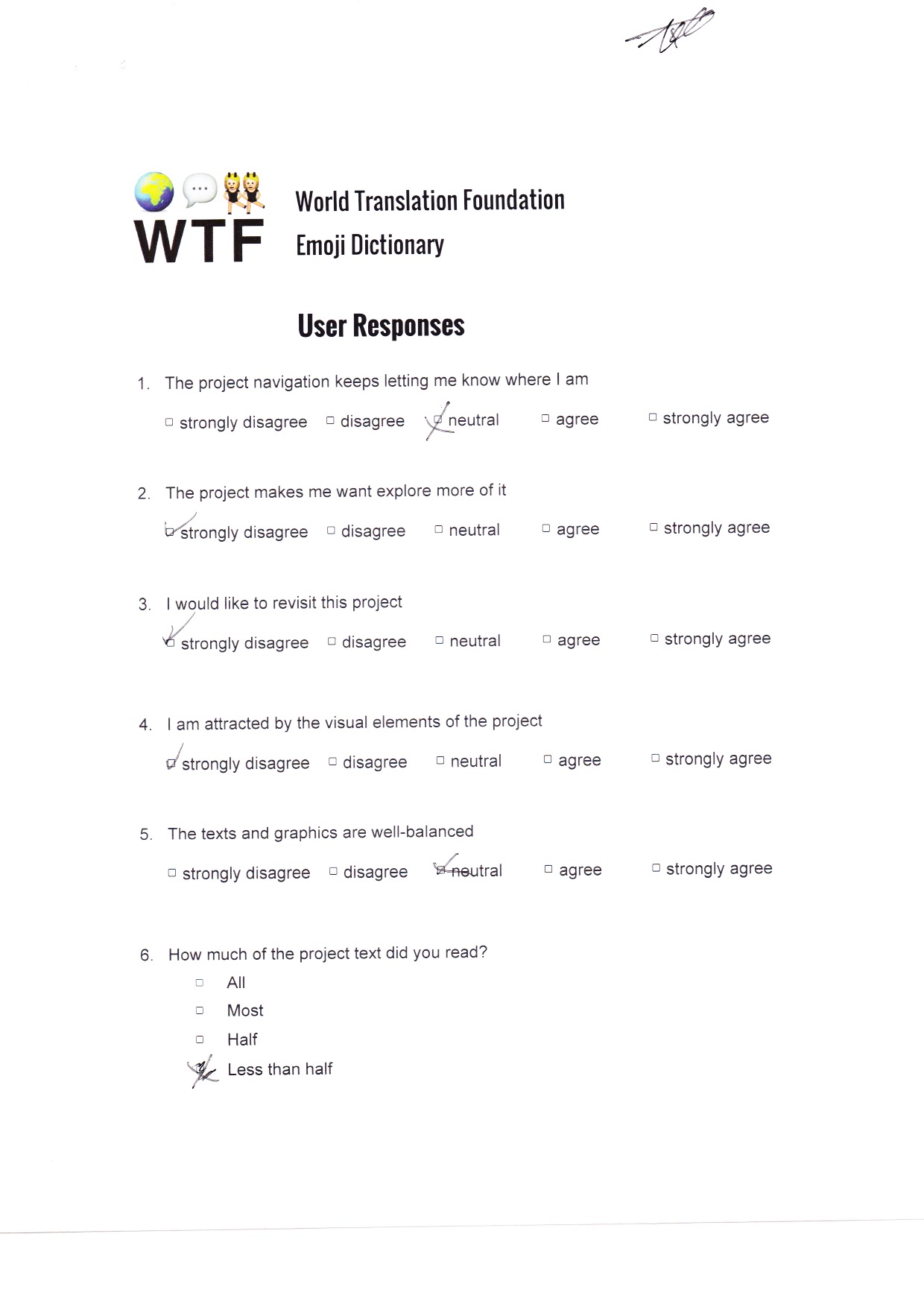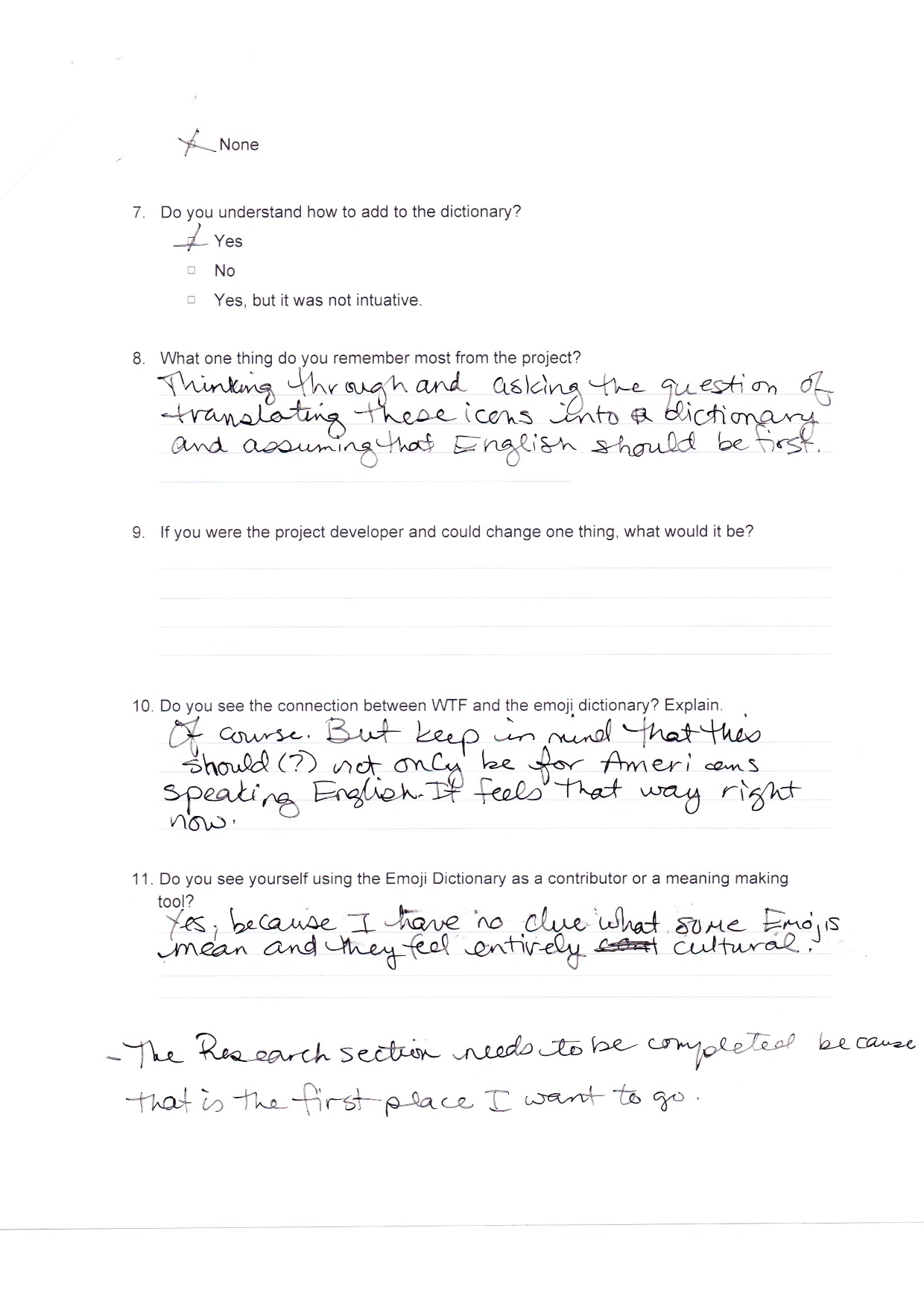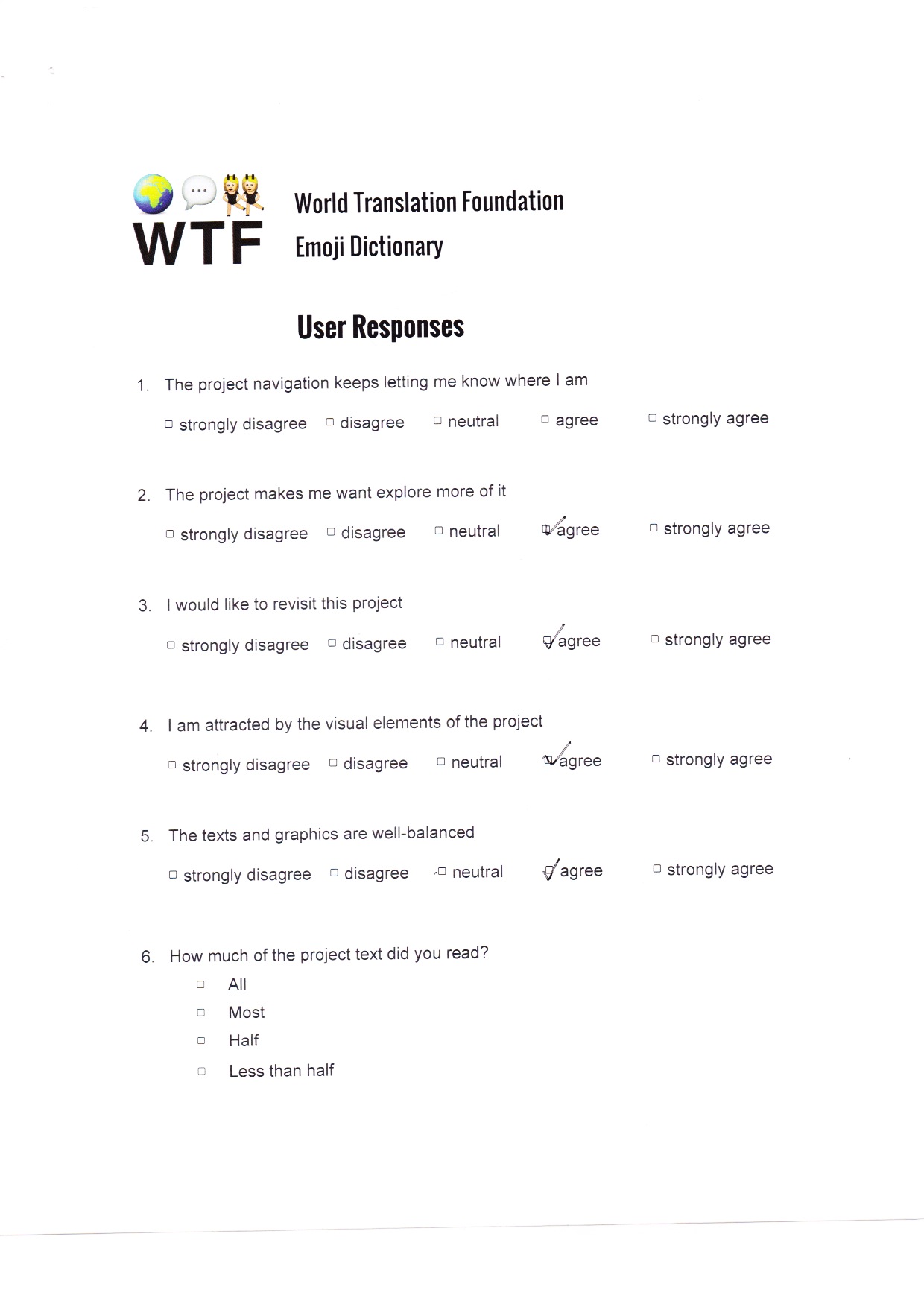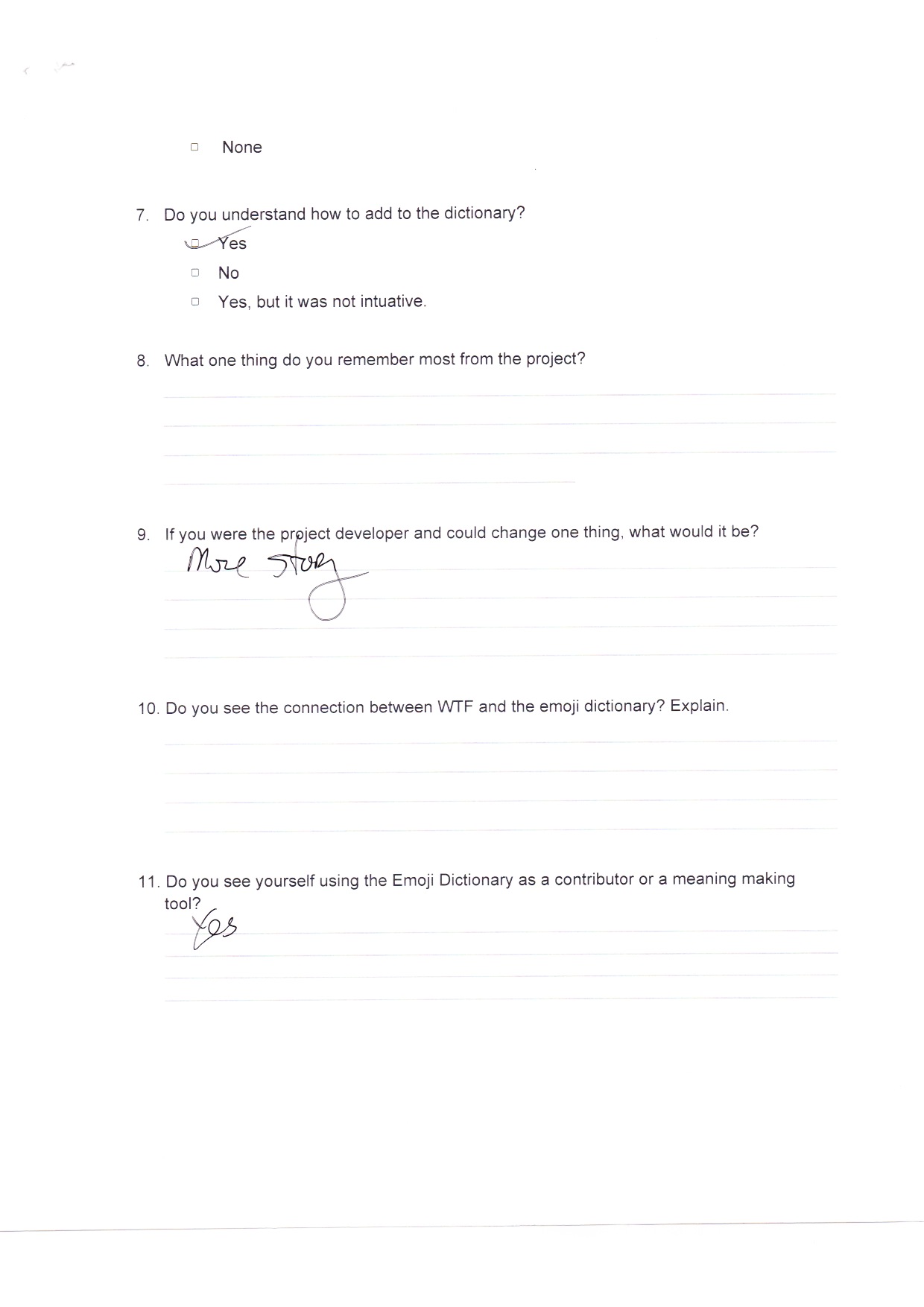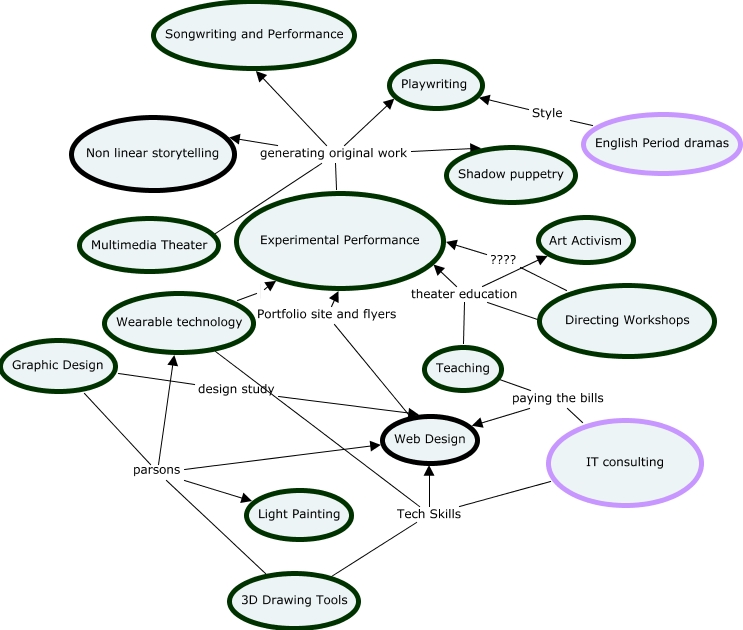Check out my worksheet on the new Emoji coming soon to an iphone near you. Unicode 7.0 has added over 200 Emoji and I have them all nicely arrange for you on the World Translation Foundation blog.
Read MoreWorld Translation Foundation User Tests
I was able to test the website with the two target audiences. Here is a small selection of those tests.
World Translation Foundation: Final Paper
World Translation Foundation Concept Map
World Translation Foundation: Group Research Presentation for MS2
The Curiousity of Language is a research presentation given my Ezgi Ucar, Niki Selken and Xiaoqi Liu
Read MoreWorld Translation Foundation: User Scenario
User Background
The primary audience for my project is a tech savvy American man or woman between the ages of 18 and 44 with an interest in Japanese emoji, art, and language. They are the early adopter sort of person who uses Twitter and Texting quite frequently and enjoys adding content to websites like YouTube, Vine, and Reddit.
Read MoreWorld Translation Foundation: exploring emoji as an abstracted communication form
My project deals with the question, how does technology mediate our relationships with each other? Does it contribute or disrupt human closeness and connection?
Read MoreDesign Brief
My project deals with the question, how does technology mediate our relationships with each other? Does it contribute or disrupt human closeness and connection?
Read More#2 Response to Jamer Hunt in Text and Object
Jamer Hunt’s article, "Prototyping the Social", creates a careful triad between design, social responsibility, and cultural anthropology. Hunt uses Tony Fry’s theory of “defuturing” as a foundation for his analysis of the role ethnography is playing in shaping the design of our cultural experiences and potentially every aspect of life from cleaning products to genetic modification. As stated below, Hunt leads with a warning to designers about the danger in creating for profit and functionality alone, without considering the consequences and future implication of design choices. Defuturing is, for Fry, not simply the law of unforeseen consequences. Instead, it is a conceptual mindset inherent to a style of designing that privileges the instrumental over the social. Designers ignore - at our own and others' peril-the extent to which any act of design is an act both of prefiguring a future social milieu but also the erasure of multiple possible alternatives. Design, for Fry, both designs and keeps on designing. It is an ontology of prefigurement that destroys as it creates. [1]
Fry’s notion of defuturing is important because it provides designers with stakes beyond price point, commercial success, and seemingly usefulness. For Hunt each design, system or object created becomes entwined in the “erasure of multiple possible alternatives” that never got finished.
For example, I like to imagine what Chicago O’Hare would look like if it were designed today. Would it have a central tower? Would it be circular? How would the role of computer networks affect the layout and transportation within the airport? The design is locked into time, but as Hunt says, it keeps on designing, even after it is finished.
When one imagines the impact something like that airport has had on millions of people over decades, the sheer weight of a design poorly executed is staggering. In this day and age of disposable digital design and emerging 3D printing technology I believe Fry and Hunt have more applicability in terms of imagining designing for waste management then perhaps the creation of objects with longevity.
[slideshow_deploy id='1187']
In response to Hunt and Fry’s notions of defuturing and erasure of alternatives within the design process, I will create an object that imagines multiple alternatives. I will also create something that considers it’s own lifespan. Temporality will be addressed in an attempt to confront the issues of social responsibility, usefulness, and waste management. I want my design to embrace it’s own entropy. I chose to hand sew a cup protector out of recycled felt. The piece is decorated with hand stitched lettering of the word "Defuture" to serve as a constant reminder of the choices I make. I intend to daily use this item with my coffee, not only to reduce the waste of disposable cup warmers, but also to remind myself to think of the future consequences of my daily and design actions.
[1] Clarke, Alison J. "Chapter Two." Design Anthropology: Object Culture in the 21st Century. Wien: Springer, 2011. 36. Print.
Mastery Object and Concept Map
Theater Workshop/Ritual/Warm-Up 1. Gather in a circle 2. say your name and favorite fruit 3. Take hands and pass the pulse 4. Turn to your right and massage that person, turn around and do it to the other person 5. face the circle’s center 6. Play energy ball or sound ball. - start with the ball in the center and ask people to imagine that it is a blue glowing light. - Demonstrate how it gets larger and louder and smaller and more quiet. Then do pitch - high is high and low is low. - have the group join in and make the ball expand and contract and get higher or lower - pass the ball to someone else - take the ball back and make it small and release it up 7. Ask everyone for one word of intention they would like to offer the class for the semester. everyone say those intentions. 8. Thank everyone for participating.
Concept Map
Resources:


